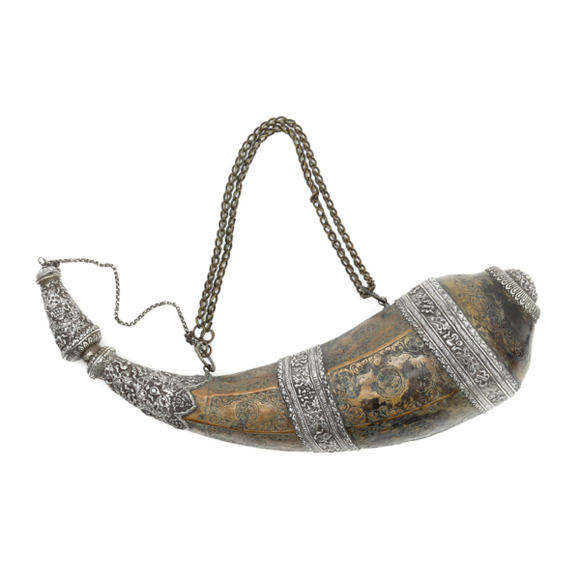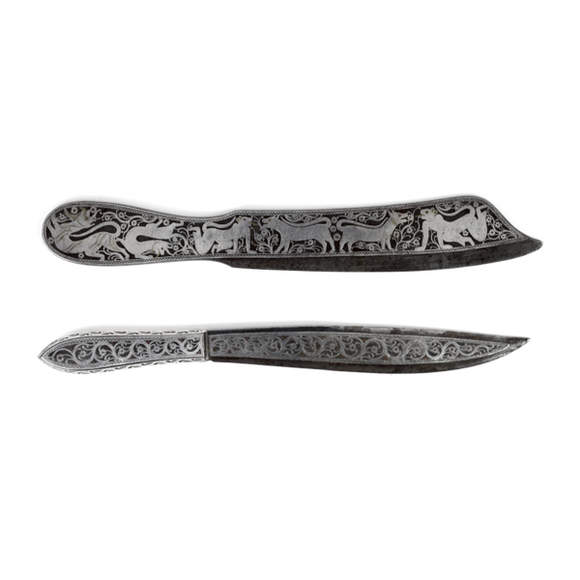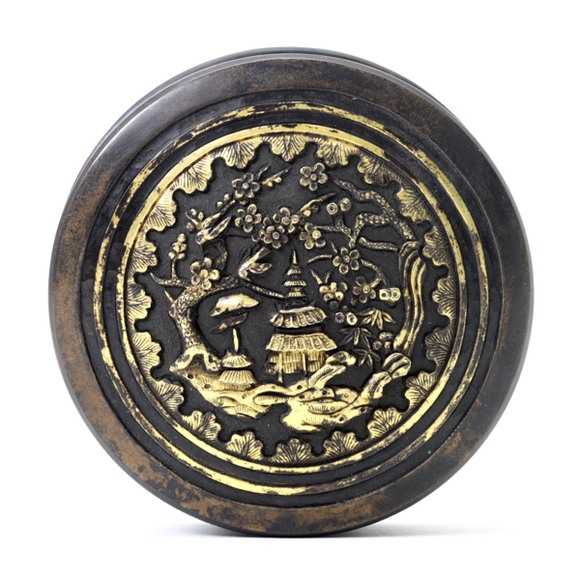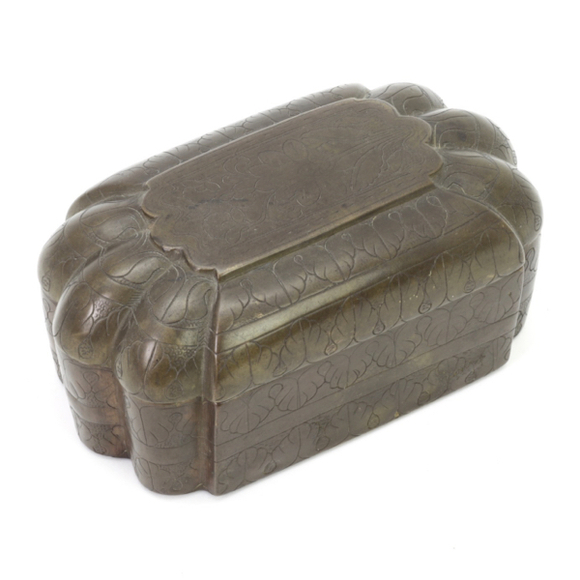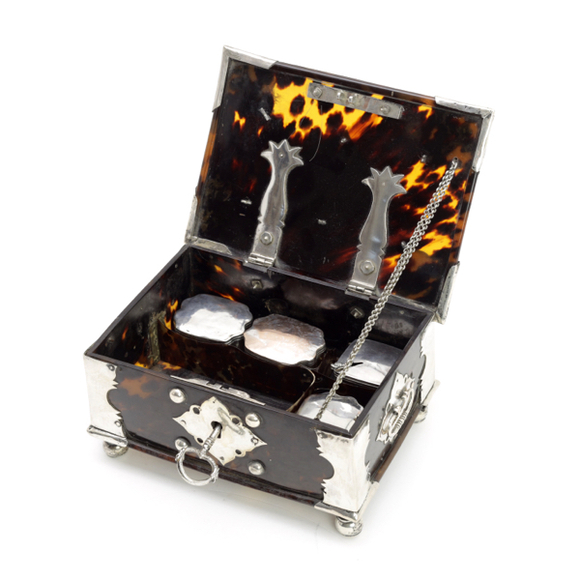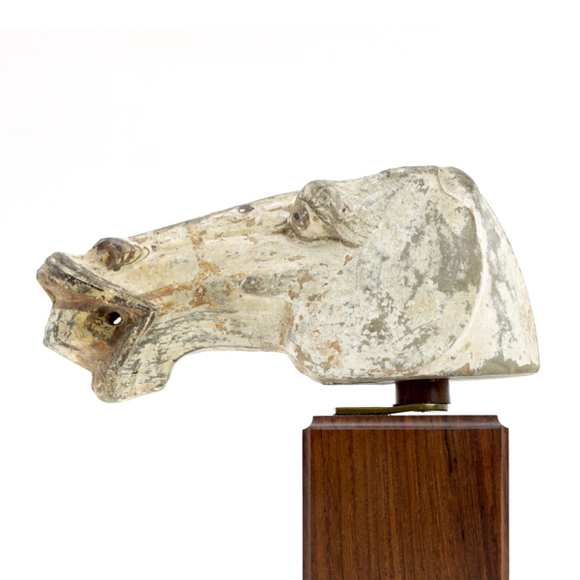Such work was made in the Royal workshops of Lhasa.

A: 42.4 cm / 16.7 inch
B: 42.4 cm / 16.7 inch
A: 30.3 cm / 11.9 inch
B: 30.3 cm / 11.9 inch
A: forte 9.5 mm, middle 8.5 mm
B: forte 8.5 mm, middle 8.5 mm
A: 98 mm x 12 mm
B: 98 mm x 12 mm
(width x max blade width)
A: 14 mm
B: 15 mm
A: 692 grams
B: 676 grams
A: 9.7 cm from guard
B: 9.6 cm from guard
China
Iron, steel, cotton cord, brass.
18th or 19th century
Chinese martial arts are famous for the use of a wide array of weapons. Some weapons are peculiar to a certain region, some may even be peculiar to a single martial art. Not surprisingly, perhaps, considering the size of China, that every once in a while a unique weapon turns up that eludes classification. Today we have another such weapon, or rather, a set of weapons.
Description
The overall shape resembles the chāi (釵), a Chinese weapon that spread to Okinawa and got known there as the "sai" which has the same handle with a fork-like guard, with a long central bar. A significant departure from conventional chāi design is that at the very tip of each of the bars here is a large crescent moon. Also, chāi don't tend to have sharp elements. On this one, all edges are semi-sharp; they won't cut but they will do more damage when hitting with them. This goes for the edges of the crescent moons, inside and outside, as well as the edges of the bar leading up to them.
The set is unusually well-made for a Chinese martial arts weapon, a genre that tends to have very utilitarian "village blacksmith" type finish. The geometry is precise, with well-defined ridges and bevels. The consistency from piece to piece is remarkable. There seem to be hints of forge folding on the crescent moons and also the bars seem to be of layers of folded steel, just like swords. This set was made by a master smith and must have been very expensive.
The handles are wrapped with cord, retaining the original wrappings that are still tight. Pommels are cast brass bolsters, peened onto the tang. Original peening is intact and everything is tight. Excellent condition throughout.
Functionality
The thrust is considered the most lethal attack of an edged weapon and the crescent moons minimize the effect of exactly that. Therefore I get the impression that the weapons are designed for a style that sought to avoid dealing lethal damage by accident. Instead, the set probably served to catch an incoming weapon with one hand and strike the attacking arm with the other, rendering the opponent harmless.
The tips are heavy enough that even a strike with the flat of the crescent moon could probably knock someone out. The hook formed on either side of the crescent moons could be used to hook a weapon or limb, and in the worst case, it could be used to deliver a very damaging strike with one of its tips.
Many martial artists made an occasional living by working as security guards for important people or travelers. In the best case, they would immobilize an attacker but would avoid doing too much damage, so they wouldn't get in trouble with local authorities. It seems that this weapon would suit such a purpose very well.
Conclusion
A very rare and unusual set of Chinese parrying weapons with semi-sharp bars leading up to crescent moon shaped heads that elude classification at this point. The quality is far above standard for Chinese martial arts weapons, the condition is excellent. They were probably custom-made for someone.








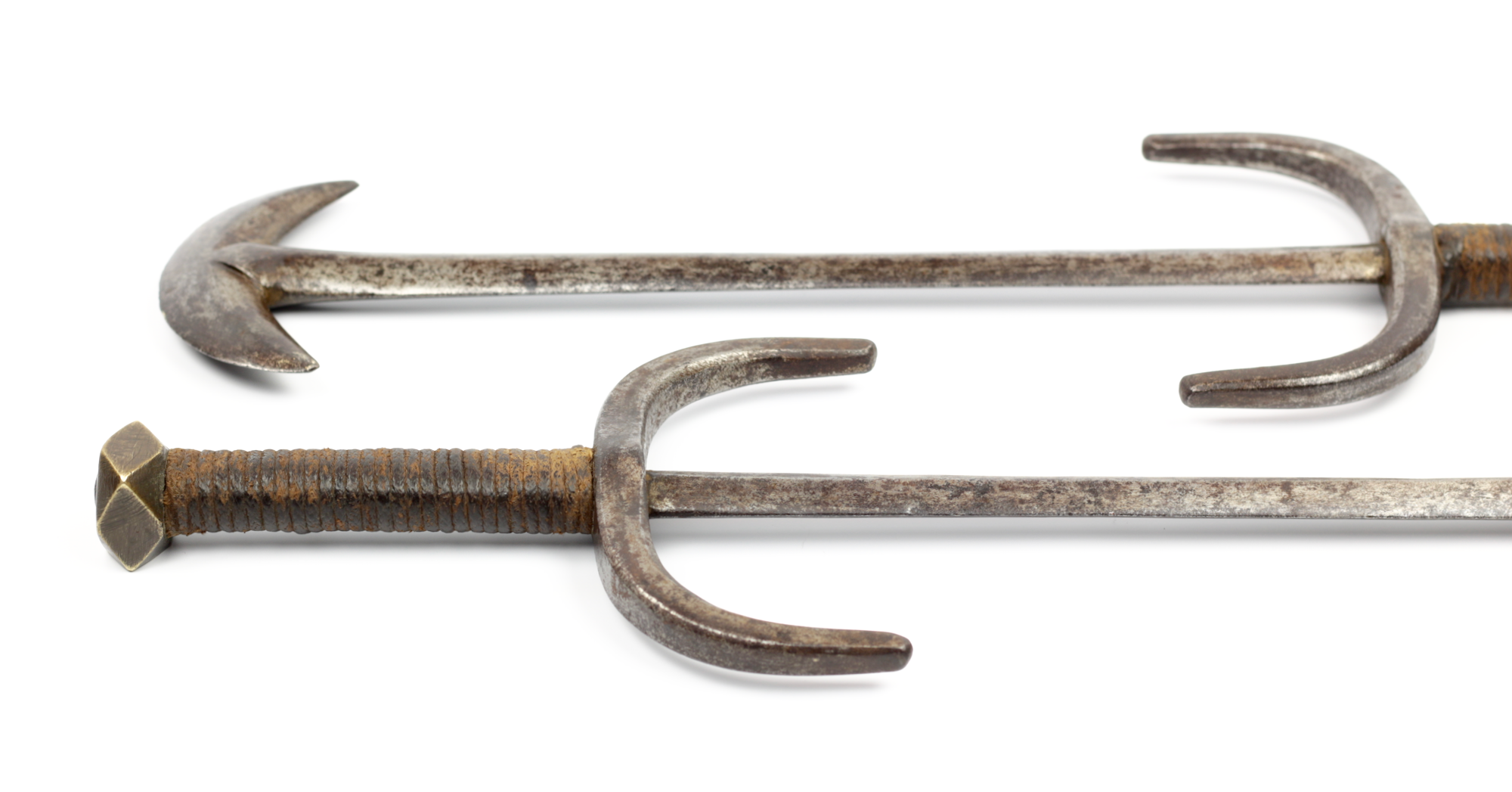

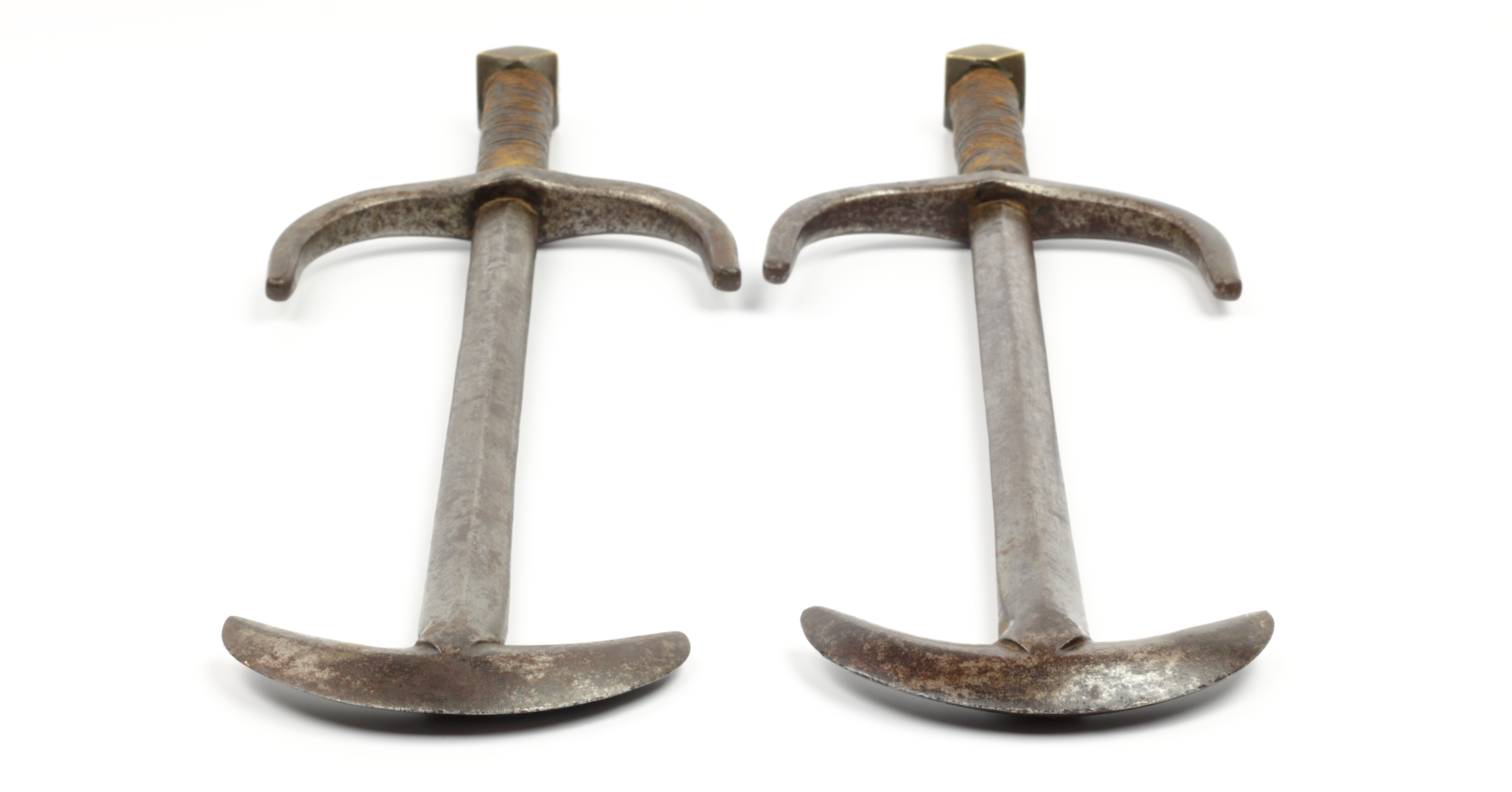



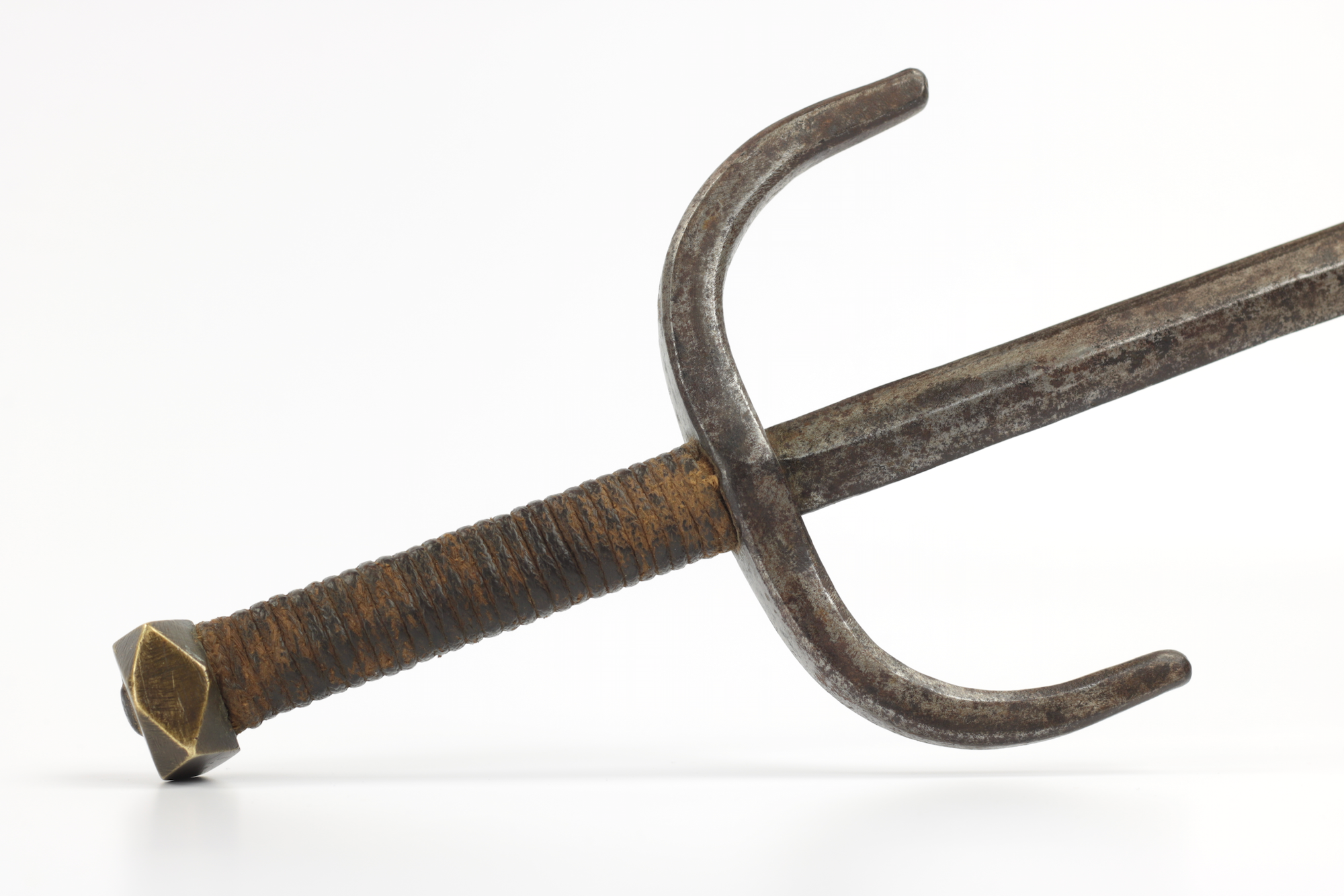








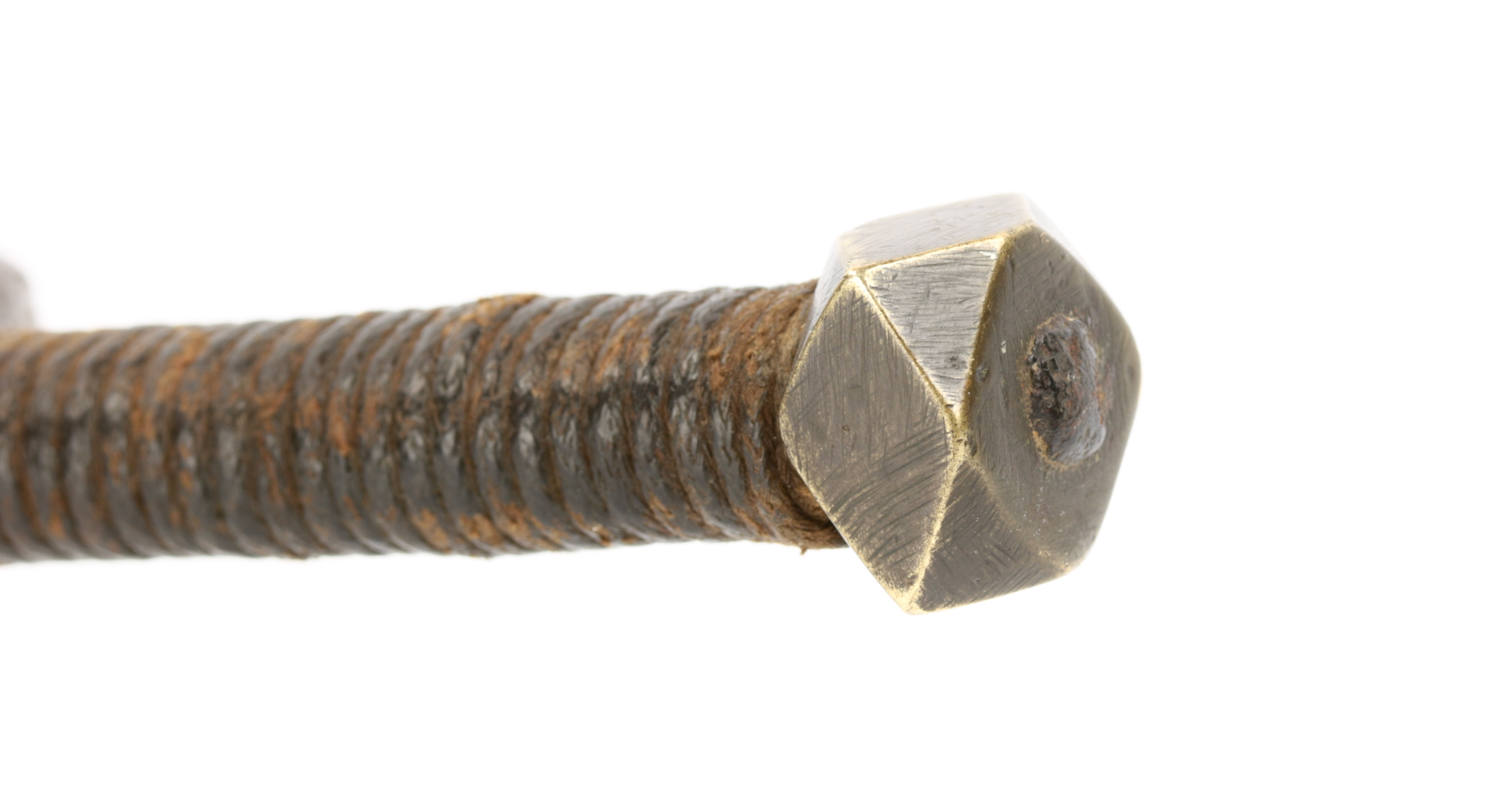





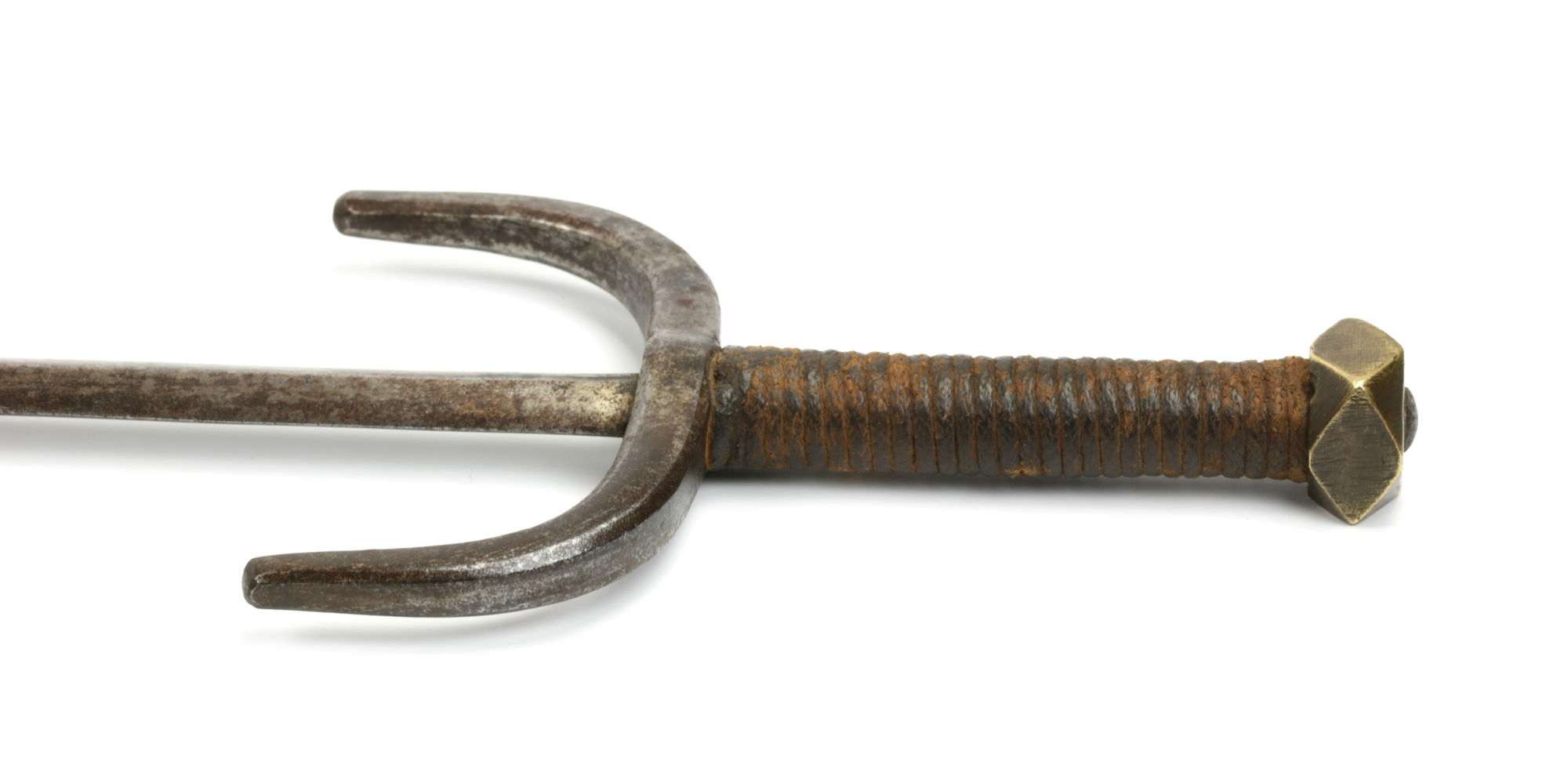



Sawasa is metalware in black and gold made primarily for the Dutch expat community in Asia.

